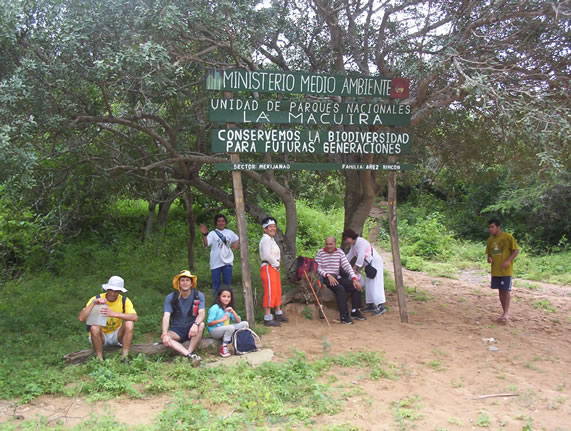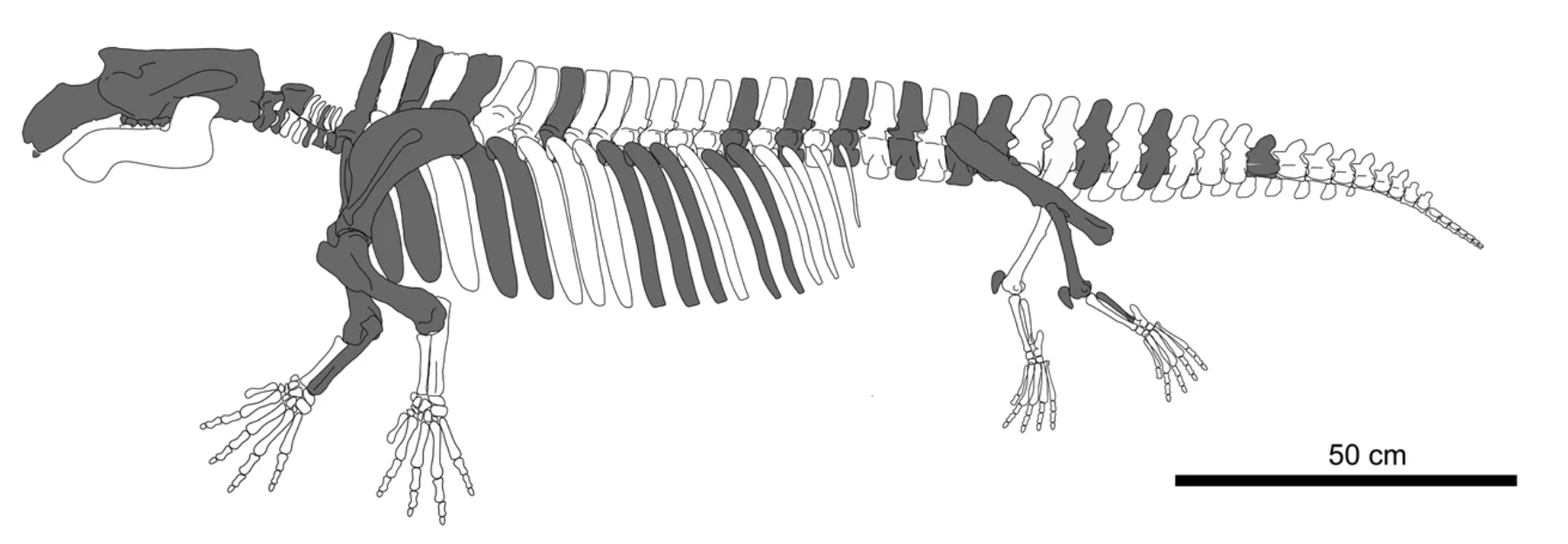|
Hilarcotherium
''Hilarcotherium'' is an extinct genus of astrapotheriid mammals that lived in South America during the Middle Miocene ( Laventan). The type species is ''H. castanedaii'', found in sediments of the La Victoria Formation, part of the Honda Group in the department of Tolima in Colombia. In 2018, Carrillo ''et al.'' described a partial skull and mandible of a second species ''H. miyou'' from the Castilletes Formation in the Cocinetas Basin of northern Colombia, and estimated the body weight of the animal at .Carillo, 2018, p.142 Discovery The remains of ''Hilarcotherium castanedaii'' were discovered by José Alfredo Castañeda, who found them in the Malnombre Creek in the Hilarco village located near the town of Purificación, in Tolima. This area, in the valley of the Upper Magdalena River, correspond to the La Victoria Formation, that along with the Villavieja Formation makes the Honda Group, dating from the Middle Miocene, made between 13-11.8 million years ago and it has pr ... [...More Info...] [...Related Items...] OR: [Wikipedia] [Google] [Baidu] |
Hilarcotherium Skull
''Hilarcotherium'' is an extinct genus of astrapotheriid mammals that lived in South America during the Middle Miocene ( Laventan). The type species is ''H. castanedaii'', found in sediments of the La Victoria Formation, part of the Honda Group in the department of Tolima in Colombia. In 2018, Carrillo ''et al.'' described a partial skull and mandible of a second species ''H. miyou'' from the Castilletes Formation in the Cocinetas Basin of northern Colombia, and estimated the body weight of the animal at .Carillo, 2018, p.142 Discovery The remains of ''Hilarcotherium castanedaii'' were discovered by José Alfredo Castañeda, who found them in the Malnombre Creek in the Hilarco village located near the town of Purificación, in Tolima. This area, in the valley of the Upper Magdalena River, correspond to the La Victoria Formation, that along with the Villavieja Formation makes the Honda Group, dating from the Middle Miocene, made between 13-11.8 million years ago and it has ... [...More Info...] [...Related Items...] OR: [Wikipedia] [Google] [Baidu] |
Honda Group, Colombia
The Honda Group ( es, Grupo Honda, Tsh, Ngh) is a geological group of the Upper and Middle Magdalena Basins and the adjacent Central and Eastern Ranges of the Colombian Andes. The group, in older literature also defined as formation, is in its present-day type section in the Tatacoa Desert in the department of Huila subdivided into two main formations; La Victoria and Villavieja. The group was originally defined in and named after Honda, Tolima, but has been redefined based on the many fossil finds in the Tatacoa Desert, to the south. In the original type section of its occurrence, the thick group is subdivided into three formations, from old to young; Cambrás, San Antonio and Los Limones. The group dates to the Neogene period; in its broadest definition from the Late Oligocene to Late Miocene, and in the redefined type section restricted to the Laventan age of the South American Land Mammal Ages (SALMA), equivalent to the Middle Miocene Serravallian epoch. The Honda Gr ... [...More Info...] [...Related Items...] OR: [Wikipedia] [Google] [Baidu] |
Laventan
The Laventan ( es, Laventense) age is a period of geologic time (13.8 to 11.8 Ma) within the Middle Miocene epoch of the Neogene, used more specifically within the SALMA classification in South America. It follows the Colloncuran and precedes the Mayoan age.Madden et al., 1997 Etymology The age is named after the Miocene Lagerstätte La Venta, where a rich biodiversity from the Middle Miocene has been recovered from the Honda Group. Formations Fossil content Correlations The Laventan (13.8 to 11.8 Ma) correlates with: * NALMA ** latest Barstovian (15.97-13.65 Ma)Barstovian at Fossilworks.org ** early |
La Venta (Colombia)
La Venta is a fossil locality located in the modern departments of Tolima and Huila in Colombia. This site is one of the richest Neogene fossil assemblages in South America and represents the best-known Cenozoic fossil site outside of Argentina. It provides a glimpse of what life in the region was like before the main wave of the Great American Interchange. Geology The fossils occur in Middle Miocene rocks of the Honda Group, which is divided into the younger Villavieja Formation and the older La Victoria Formation. The La Venta fauna contained ancient species of animal genera and families still alive today, as well as some entirely extinct prehistoric lineages. These animals lived some 13.8 to 12 million years ago in the Laventan age, which was named after La Venta. At that time, the climate of the region was wetter than today and there was much forest of trees similar (and probably related) to the ''sapino'' (''Goupia glabra'') of our time. List of fauna Fossil animals f ... [...More Info...] [...Related Items...] OR: [Wikipedia] [Google] [Baidu] |
Cocinetas Basin
The Cocinetas Basin ( es, Cuenca Cocinetas) is a small sedimentary basin of approximately in northeasternmost Colombia. The onshore pull-apart basin is located in the department of La Guajira at the border with Zulia, Venezuela. The basin is bound by three sets of hills; the Serranía de Jarara, Serranía Macuira and Serranía Cocinas, with the eastern boundary formed by the Gulf of Venezuela, part of the Caribbean Sea. The basin was formed during the Paleogene as a result of the eastward movement of the Caribbean Plate along the northern edge of the South American Plate, leading to the deposition of a Middle Eocene to Middle Pleistocene sedimentary sequence of conglomerates, sandstones, siltstones, limestones and mudstones. In the Cocinetas Basin, several fossiliferous stratigraphic units have been registered, providing an abundance of marine and continental vertebrate and invertebrate fossil fauna assemblages. The Uitpa, Jimol, Castilletes and Ware Formations contain numerou ... [...More Info...] [...Related Items...] OR: [Wikipedia] [Google] [Baidu] |
Castilletes Formation
The Castilletes Formation ( es, Formación Castilletes, N1c) is a fossiliferous geological formation of the Cocinetas Basin in the northernmost department of La Guajira, Colombia. The formation consists of fossiliferous mudstones, siltstones and medium-grained to conglomeratic fossiliferous lithic to quartzitic sandstones. The Castilletes Formation dates to the Neogene period; Burdigalian to Langhian stages, Colloncuran and Friasian in the SALMA classification, and has a maximum thickness of . Etymology The formation was defined by Rollins in 1965 and named after the village of Castilletes.Moreno et al., 2015, p.27 Description Lithologies The Castilletes Formation consists of fossiliferous mudstones, siltstones and medium-grained to conglomeratic fossiliferous lithic to quartzitic sandstones.Moreno et al., 2015, pp.27-32 Stratigraphy and depositional environment The Castilletes Formation overlies the Jimol Formation and is overlain by the Ware Formation. The ... [...More Info...] [...Related Items...] OR: [Wikipedia] [Google] [Baidu] |
2018 In Mammal Paleontology
This paleomammalogy list records new fossil mammal taxa that were described during the year 2018, as well as notes other significant paleomammalogy discoveries and events which occurred during that year. Mammals in general * A study on the morphological diversity of vertebral regions in non-mammalian synapsids, and on its implication for elucidating the evolution of anatomically distinct regions of the mammalian spines, is published by Jones ''et al.'' (2018). * A study on the evolution of the mammalian jaw is published by Lautenschlager ''et al.'' (2018), who find no evidence for a concurrent reduction in jaw-joint stress and increase in bite force in key non- mammaliaform taxa in the cynodont–mammaliaform transition. * A study on the structure and origin of the braincase sidewalls of monotremes, multituberculates and therians, based on data from extant and fossil mammals and non-mammalian cynodonts, is published by Crompton ''et al.'' (2018). * Vertebrate burrows, inte ... [...More Info...] [...Related Items...] OR: [Wikipedia] [Google] [Baidu] |



